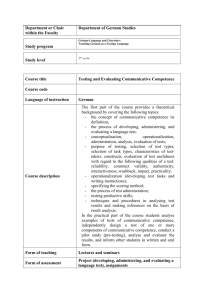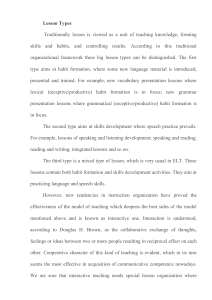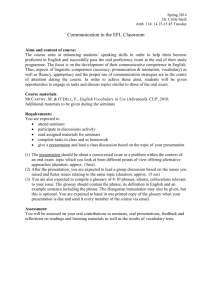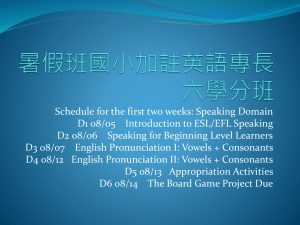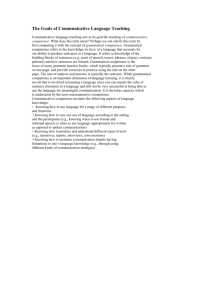Introduction: Since the 1970s, applied linguists, second language
advertisement
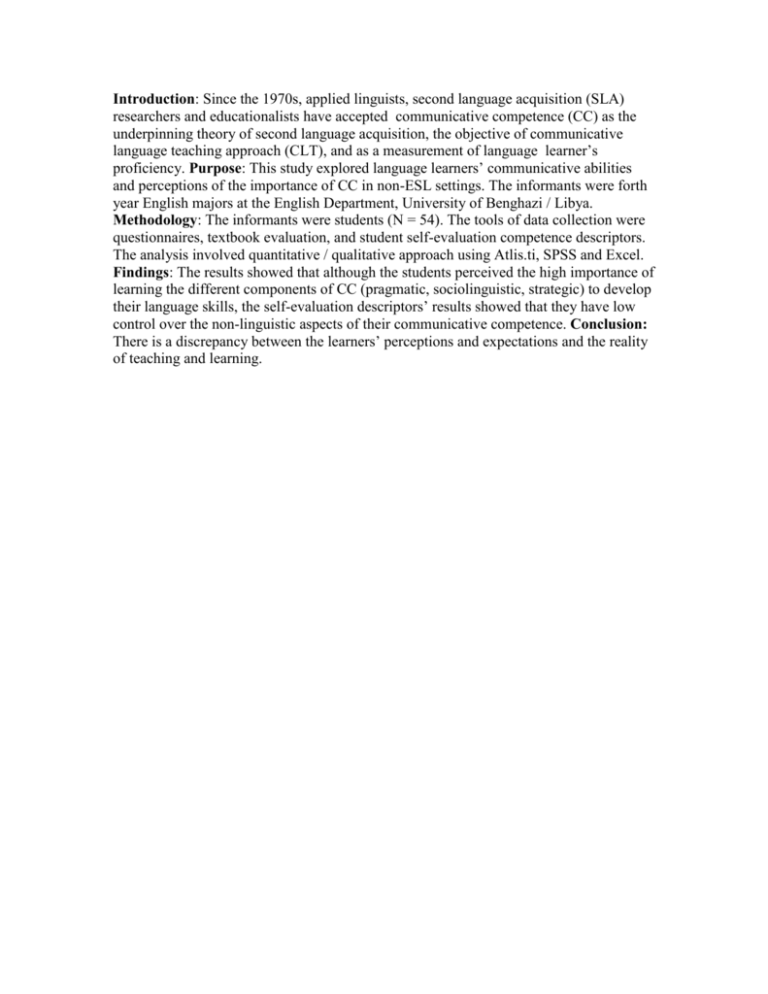
Introduction: Since the 1970s, applied linguists, second language acquisition (SLA) researchers and educationalists have accepted communicative competence (CC) as the underpinning theory of second language acquisition, the objective of communicative language teaching approach (CLT), and as a measurement of language learner’s proficiency. Purpose: This study explored language learners’ communicative abilities and perceptions of the importance of CC in non-ESL settings. The informants were forth year English majors at the English Department, University of Benghazi / Libya. Methodology: The informants were students (N = 54). The tools of data collection were questionnaires, textbook evaluation, and student self-evaluation competence descriptors. The analysis involved quantitative / qualitative approach using Atlis.ti, SPSS and Excel. Findings: The results showed that although the students perceived the high importance of learning the different components of CC (pragmatic, sociolinguistic, strategic) to develop their language skills, the self-evaluation descriptors’ results showed that they have low control over the non-linguistic aspects of their communicative competence. Conclusion: There is a discrepancy between the learners’ perceptions and expectations and the reality of teaching and learning.


